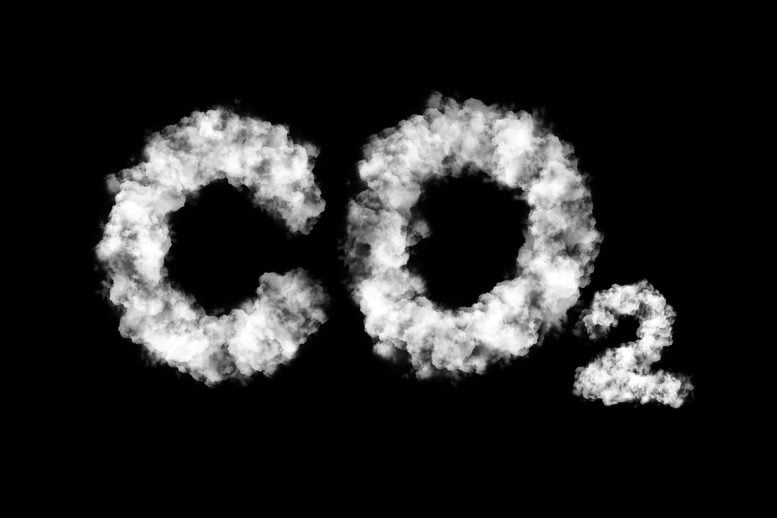
A research team at DGIST has developed an advanced photocatalyst that efficiently converts CO2 into methane, potentially offering a sustainable solution to combat global warming.
Professor In Soo-il and his team from the Department of Energy Science & Engineering at DGIST have successfully developed a highly efficient photocatalyst. This innovation is capable of converting carbon dioxide (CO2), a significant factor in climate change, into methane (CH4), commonly known as natural gas.
Global warming causes abnormal climates around the world, threatening the survival of the human race. Reducing greenhouse gases is crucial to solving the increasingly concerning problem of global warming, which requires converting atmospheric carbon dioxide into other substances. Photocatalytic technology is an environmentally friendly solution that converts carbon dioxide into useful substances such as natural gas using only solar energy and water. The natural gas produced can be used in our daily lives as a fuel for heating and cooling systems and vehicles.
Enhancements in Photocatalytic Materials
The research team combined cadmium selenide, which absorbs visible and infrared light, with titanium dioxide—a metal oxide and well-known photocatalytic material—to convert carbon dioxide into natural gas with high efficiency.
Previously, crystalline titanium dioxide, which has a periodic lattice structure, was analyzed as a photocatalytic material. However, the formation of active sites for the trivalent cations of titanium (Ti3+) was limited owing to the regular arrangement of the particles. To overcome this problem, Professor In’s team improved the catalytic reaction using amorphous titanium dioxide, which can form more active sites for Ti3+ through irregular particle arrangements that lack the periodicity of the lattice structure.
In addition to improved catalysis, the charge-transfer process is stable, ensuring a sufficient supply of electrons to participate in the reaction. This facilitates the conversion of carbon dioxide into carbon compounds, particularly methane fuel. Furthermore, unlike conventional photocatalysts that require high temperatures for regeneration, amorphous catalysts can be regenerated within one minute when oxygen is supplied to the reactor without heating.
High Efficiency and Future Research Directions
The research team’s newly developed amorphous titanium dioxide–cadmium selenide photocatalyst (TiO2-CdSe) maintained a methane-conversion performance of 99.3% for the first 6 hours after 18 hours of photoreaction, making it 4.22 times more regenerative than the crystalline photocatalyst (C-TiO2-CdSe) having the same composition.
“This study is significant in that we have developed a catalyst with regenerative active sites and identified the mechanism by which carbon dioxide is converted into methane using an amorphous catalyst through computational chemistry research,” said DGIST Professor In. “We will conduct follow-up research to improve the energy loss of the amorphous photocatalyst and enhance its long-term stability for future commercialization of the technology,” he added.
Reference: “Unravelling the effect of Ti3+/Ti4+ active sites dynamic on reaction pathways in direct gas-solid-phase CO2 photoreduction” by Niket S. Powar, Sanghoon Kim, Junho Lee, Eunhee Gong, Chaitanya B. Hiragond, Dongyun Kim, Tierui Zhang, Minho Kim and Su-Il In, 26 March 2024, Applied Catalysis B: Environment and Energy.
DOI: 10.1016/j.apcatb.2024.124006
This study was supported by the Medium-sized Research Program and the South Korea-China Cooperation Program of the Ministry of Science and ICT.
6 Comments
Efficiency is good. However, will the process be economical?
“Reducing greenhouse gases is crucial to solving the increasingly concerning problem of global warming, which requires converting atmospheric carbon dioxide into other substances.”
Methane is a greenhouse gas! While I don’t personally accept the claim, some claim that methane is the third strongest common greenhouse gas.
Methane is a VERY strong greenhouse gas, much more potent than CO2. On an instantaneous basis, it has something like 80X the warming effect of CO2. It has a shorter lifetime in the atmosphere than CO2, however, so on a century-long basis, it is considered to be 28X worse than CO2
That’s what I thought as soon as I saw this headline! How is converting CO2 to methane any better in terms of reducing greenhouse gases? Sure, the science is cool, but just because we can do something doesn’t mean we should.
The cited global warming potential of 80X is not instantaneous. It is the cumulative, integrated result over a 20-year time span. Furthermore, it is for equal weights of gases with different molecular weights. When converted to the molar fraction, measured in parts per million, which is how the greenhouse gases are usually measured and reported, the impact is less impressive, being about 30X for the 20-year integration period. However, the participants in the 1997 Kyoto Protocol made the 100-year integration time operational for multiple gases. When the 100-year integration is used, and converted to parts per million concentration, methane only has a global warming potential of about 10X.
[ https://wattsupwiththat.com/2023/03/06/the-misguided-crusade-to-reduce-anthropogenic-methane-emissions/ ]
This is virtually pure hype. The catalyst matters very little in this process. to convert CO2 to methane involves consumption of a huge amount of green H2 — CO2 + 4H2 ==> CH4 + 2H2O — and production of the H2 requires a great deal of energy. Photocatalysis also means that the process will be limited by surface area rather than volume, that it will be intermittent due to dark or cloudy periods, and that it will need to be sited on land that is also suitable for solar power production, which is a MUCH better use of that resource.